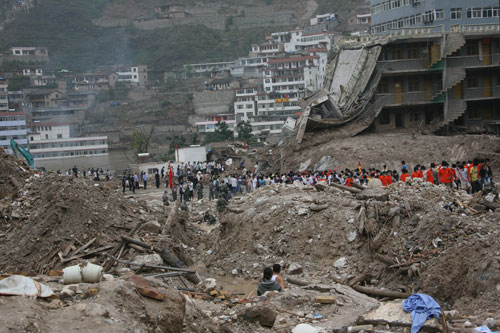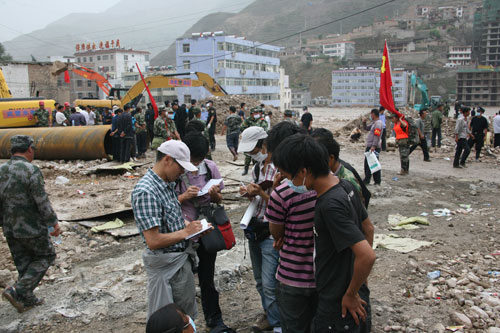Chengdu Institute of Mountain Hazards and Environment, Chinese Academy of Sciences (IMHE) summarized the causes of the deadly Landslide taken place on Aug.7 in Zhouqu, Gansu after two investigations there from Aug. 9 to 12.
Zhouqu witnessed the deadliest landslide with high current velocity and huge destructive force in its history. IMHE sent two scientific expeditions to investigate the mechanism of the mudslide, revealing three major causes of the disaster.

Zhouqu Landslide (Picture by IMHE)
1. Torrential rain prompted an avalanche of sludge and debris to crash down on Zhouqu County, which triggered the landslide directly.
2. The special geological structure was an important factor leading to the disaster. The mountain rocks there became looser and more easily broken due to the impact of the Wenchuan earthquake. Moreover, the poor vegetation and ongoing drought resulted in the disintegration and cracks of rocks. Thus, whenever a heavy rain fell, the vast loose substances from the slopes were prone to forge a landdslide.

IMHE experts were working in Zhouqu.
3. The local topography and unique landform made Zhouqu vulnerable to flooding and geological disasters. According to statistics, 12 destructive mudslides had hit the town from the 1820s to the1870s, regardless of small ones.
Currently, the expeditions continued their efforts in analyzing the disaster to provide scientific support for the restoration and reconstruction of the afflicted area and the prevention from mudslide again.